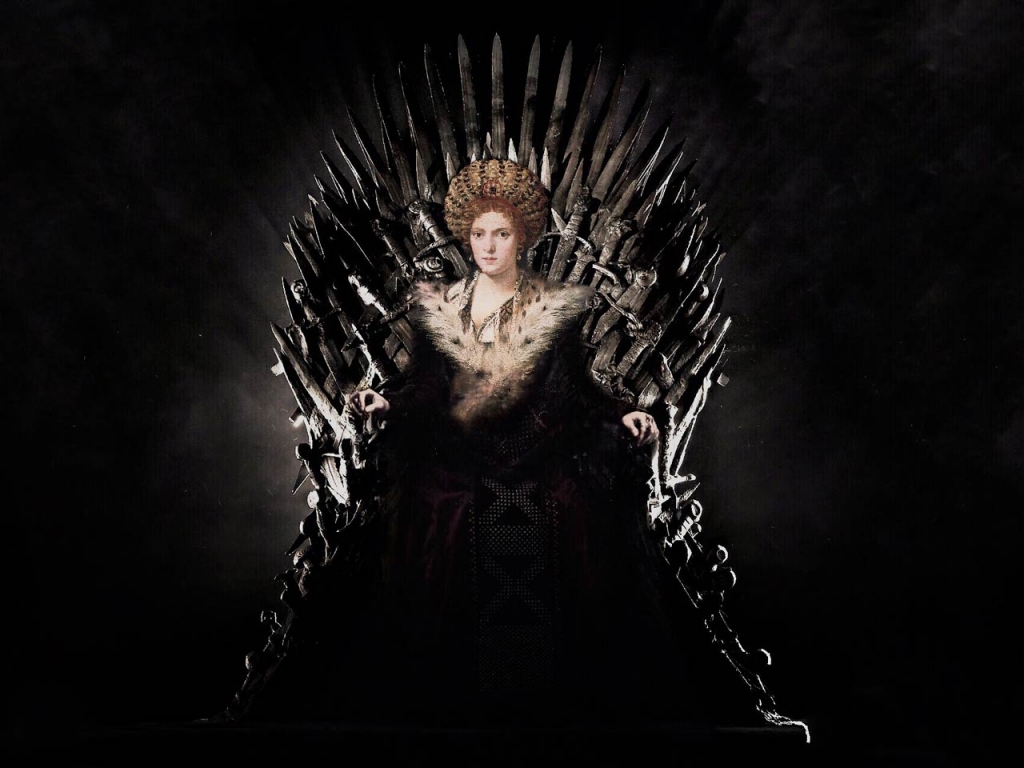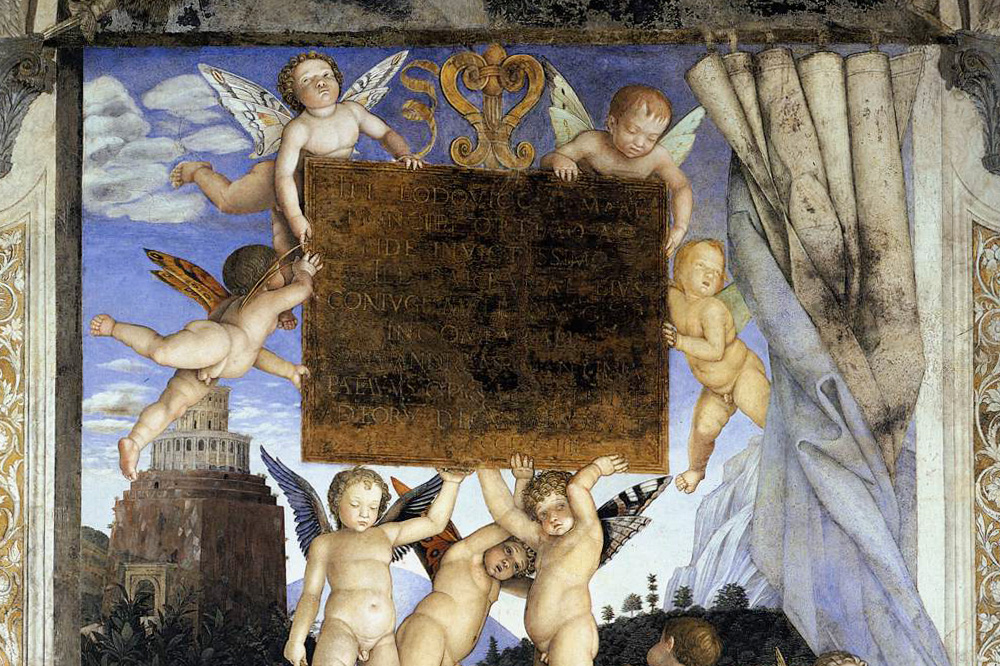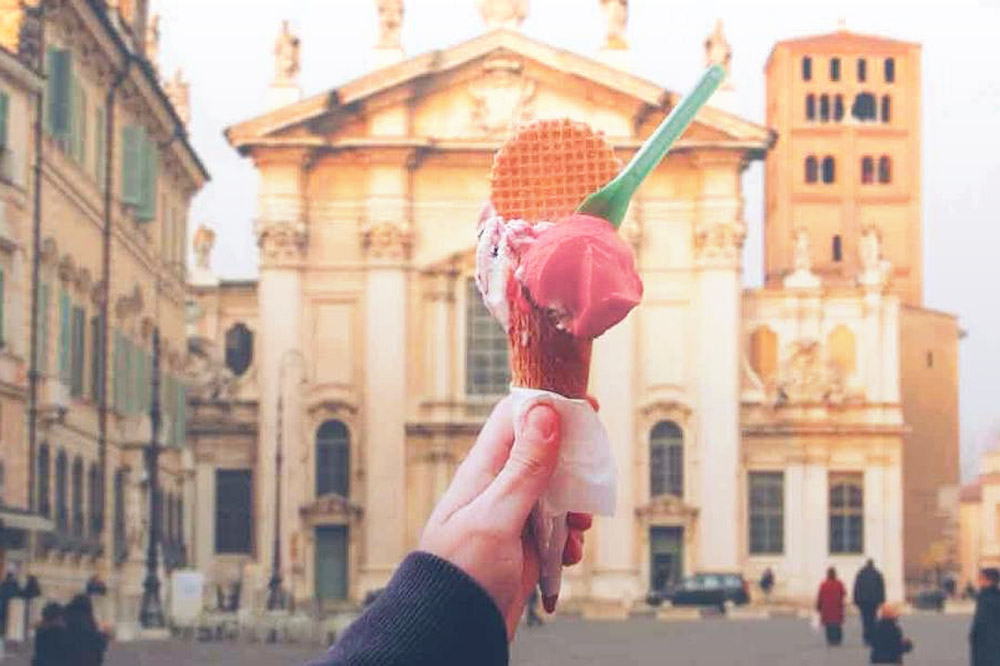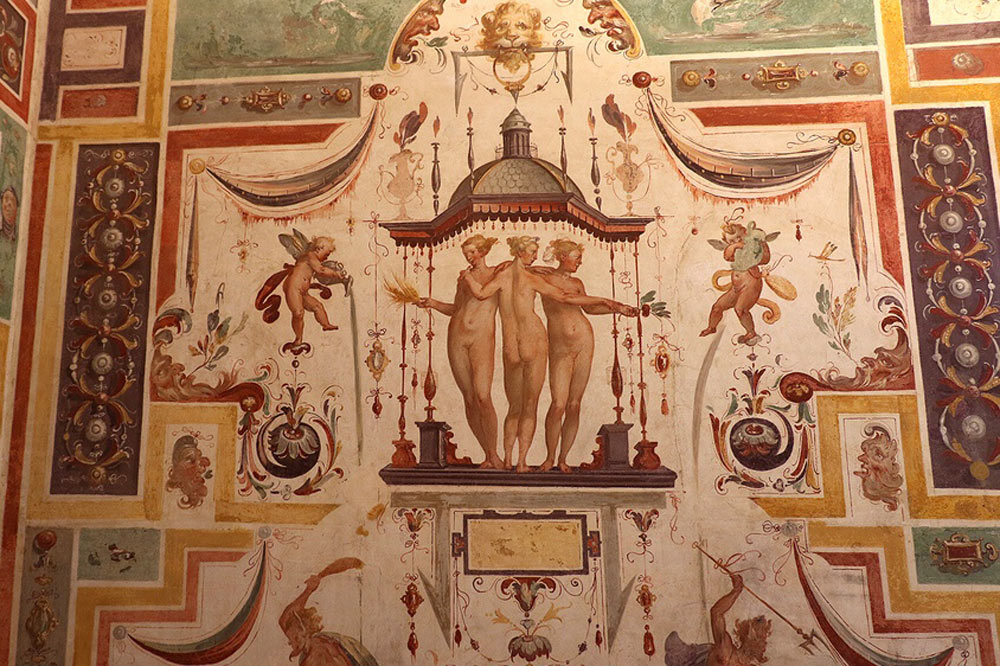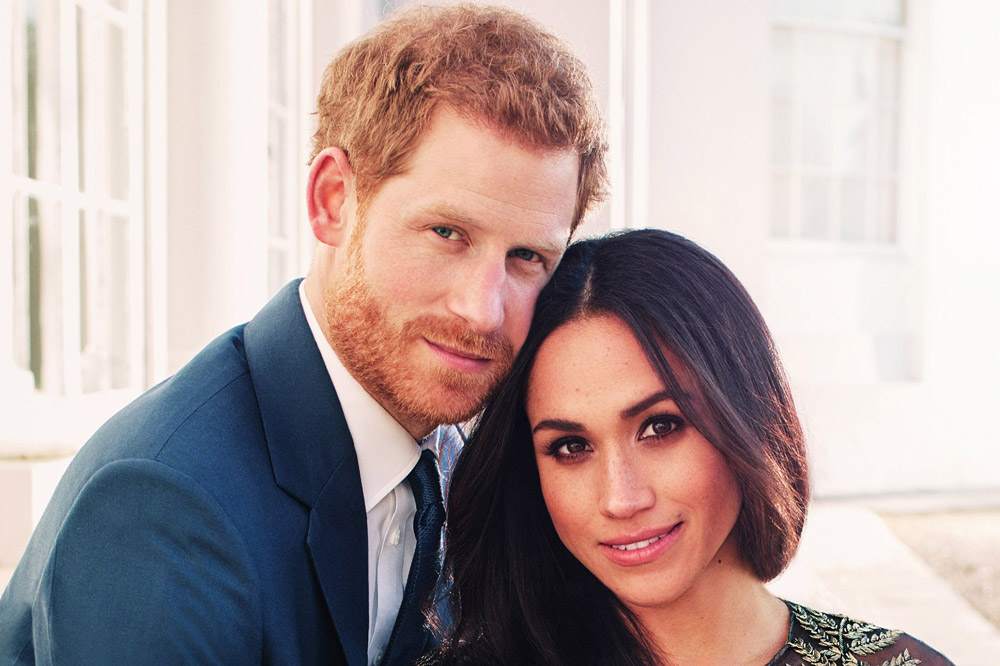Quite often, during my guided tours in Mantua, I describe the Italian Renaissance as a real “Game of Thrones”: powerful families, ruling different lands, quite often fighting each other. The Houses Stark, Targaryen, Lannister, Baratheon, Tyrell and so on, are not so different from the Gonzaga, Este, Sforza, Medici, Borgia and many of the other Renaissance dynasties.
Sometimes, as soon as I make this paragon, somebody asks “where the dragons are?”. Good point. Dragons are legends… but the Visconti family, ancient lords of Milan, was acclaiming one of their ancestors as the slayer of a dragon (and this is why they were bearing a dragon in their coat of arms).
A second question often concerns incest… well, at the time of the Renaissance there were many rumors about some dirty “family habits” of the Borgias. So it looks like Rome was not that different from Westeros.
The third question is about the Wall and what comes from behind it. The Alps have always been seen by the Italians as a border between “us” and the “others”. Even if divided in many different kingdoms, duchies and nations, during the Middle-Ages and the Renaissance Italians used to recognize themselves as one people, with similar languages and the same religion. People living on the other side of the Alps were seen as strangers.
Many other similarities are to be found: for example the High Sparrow, strongly reminds of the Dominican preacher Girolamo Savonarola.
Other references are on a visual level: the walls of the Orphanage at Flea Bottom are decorated with plaques clearly inspired by the decoration of the “Spedale degli Innocenti” in Florence, created in 1487 by Andrea della Robbia. It is interesting to note that the “Spedale degli Innocenti” was, in the origin, a children’s orphanage too.
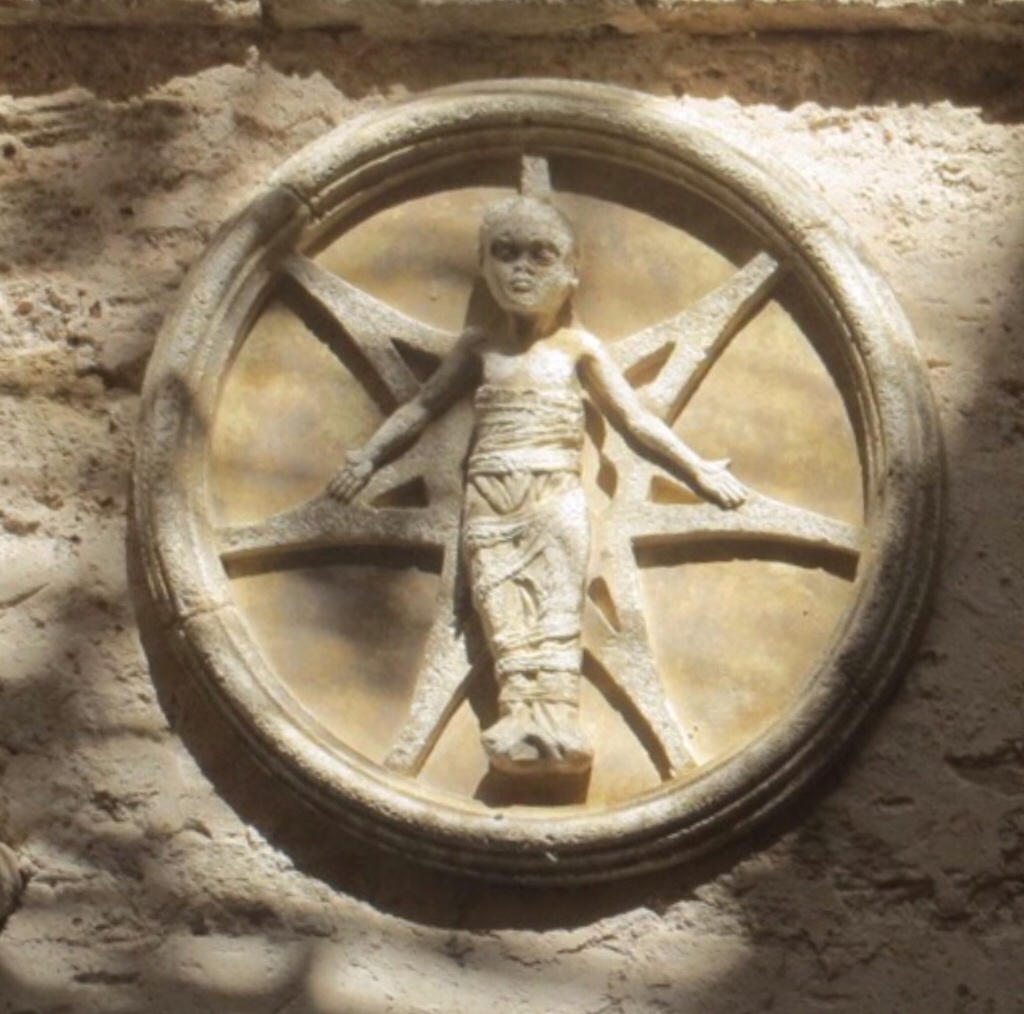
Wall plaque from the Orphanage at Flea Bottom, Production Design / Art Direction Christina Moore, GOT Season 3
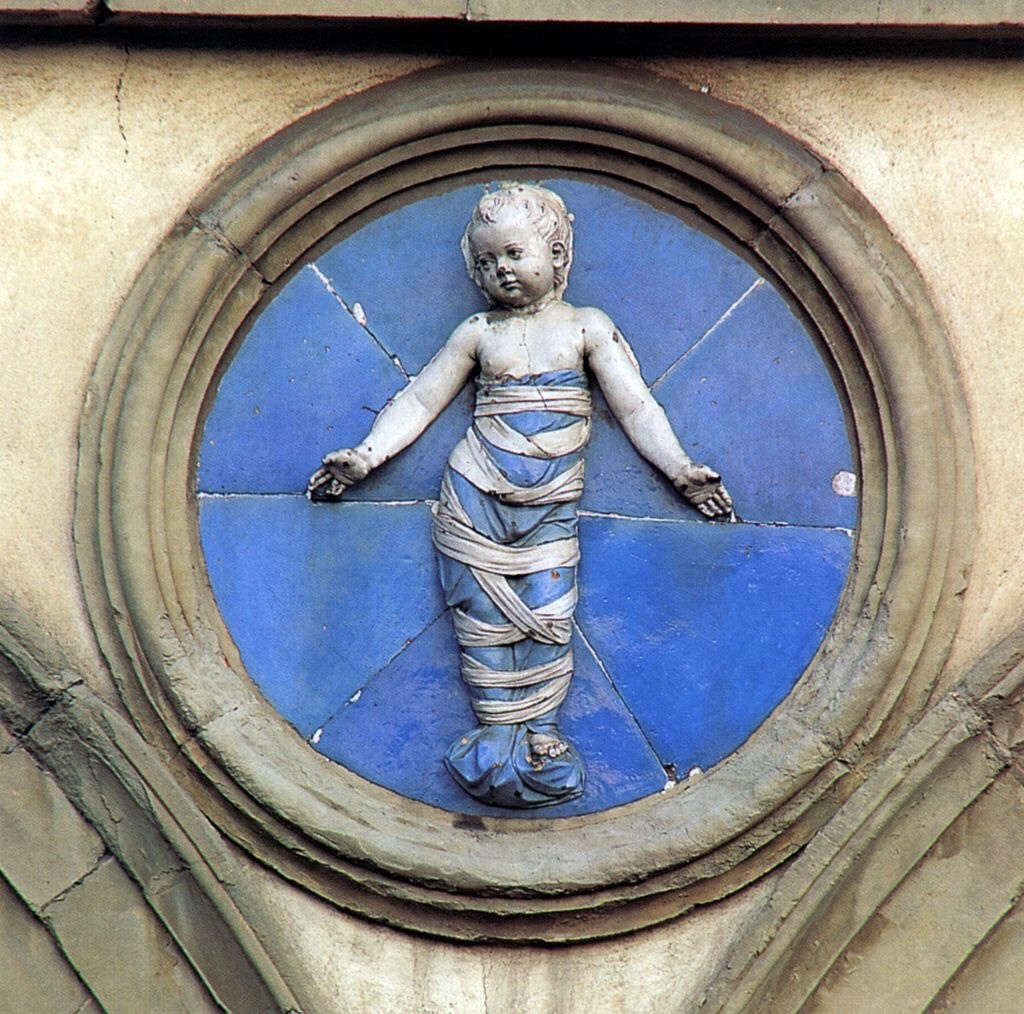
Andrea della Robbia, Decoration of the “Spedale degli Innocenti” in Florence, 1487
Also, the plot of “Game of Thrones” includes some powerful female characters, and in the panorama of the Italian Renaissance there are some interesting cases of women of power as well. One of the most illustrious was Isabella d’Este, Marchioness of Mantua.
So, the next question is: which character looks more like Isabella?
Was Isabella like Daenerys Targaryen?
I would say no. Isabella never had to fight in order to have her status recognized. Also, Isabella never dared to be a “Breaker of Chains”.
But there is – at least – one similarity. In the first season of GOT, Daenerys received in a gift three fossilized dragon eggs, that she carefully cherished. The eggs were presented to her as an homage the dragon appearing in the coat of arms of House Targaryen.
Isabella d’Este is known for having been an almost insatiable collector of precious things, including works of art, antiquities and jewels. But the collection of Isabella also included the horn of an unicorn (which of course was a narwhal tusks). It was a rare and precious object, almost magical. But it was also an heraldic reference, as the unicorn was one of the emblems of the Este family.
But if Daenerys eventually has been able to have three baby dragons born from the eggs, Isabella never managed to grow an unicorn from the horn in her collection – and, most likely, she never tried.
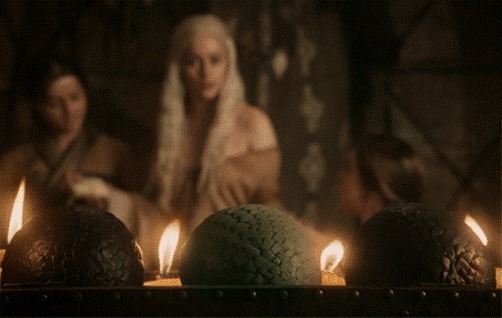
Daenerys Targaryen looking over the dragon eggs,
GOT Season 1
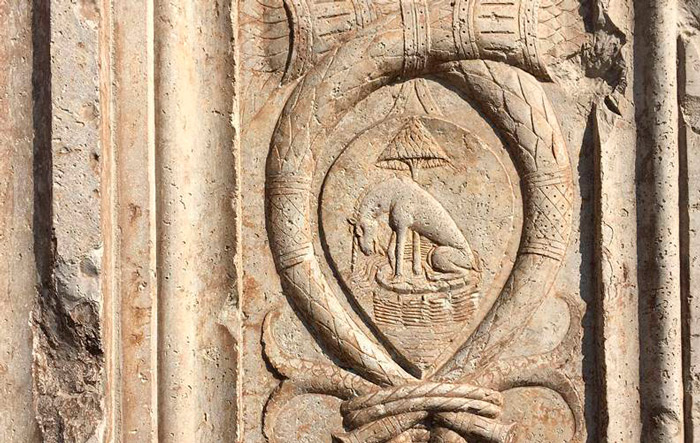
Biagio Rossetti (or Francesco del Cossa?), unicorn from the marble portal of Schifanoia Palace in Ferrara, belonging to the Este Family
Was Isabella like Sansa Stark?
Exactly as Sansa, Isabella has been educated since childhood in order to became a perfectly refined Lady, and both of them achieved the perfect level in “Her Ladyship’s Manners”. And please, note that this does not depend exclusively on the education they received, but some natural inclination is needed: Arya Stark had the same education of Sansa, but – for sure – she is more a tomboy than a Lady.
Amongst her other skills, Sansa is described as a gifted dress-maker, and often her dresses speak an heraldic language.
The gown she wore at her wedding with Tyrion Lannister was embroiled with lions, the heraldic animal of House Lannister. And in season 6, on in the episode “the Battle of the Bastards” Sansa showed an direwolf embroidered on her corsage, the emblem of house Stark.
Thanks to the chronicles, we know that in many occasions Isabella did the same, wearing gowns decorated and embroidered with very precise visual heraldic messages. For example, on the occasion of the wedding of her brother Alfonso with Lucretia Borgia, Isabella wore a dress decorated with the emblem of the silence: a musical notation showing only rests and pauses… something like a t-shirt with the sentence “no comment” (and by this we know that Isabella was not very happy in becoming the sister in law of the notorious Lucretia Borgia).
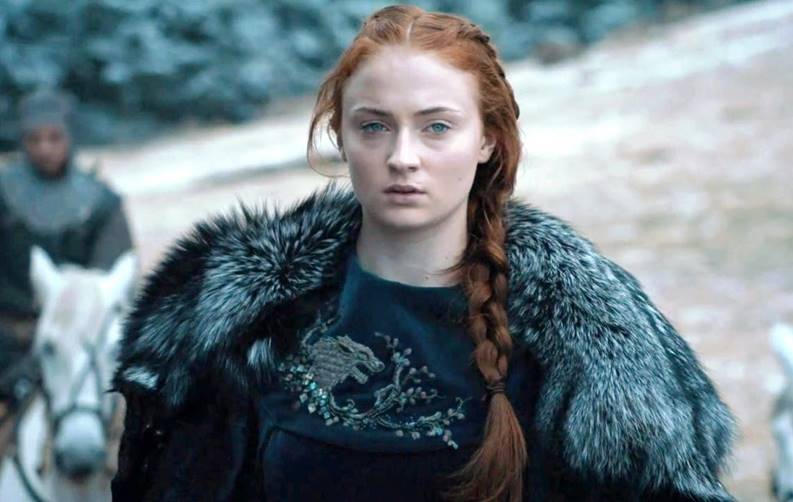
Sansa Stark in GOT Season 6,
embroidery by Michele Carragher
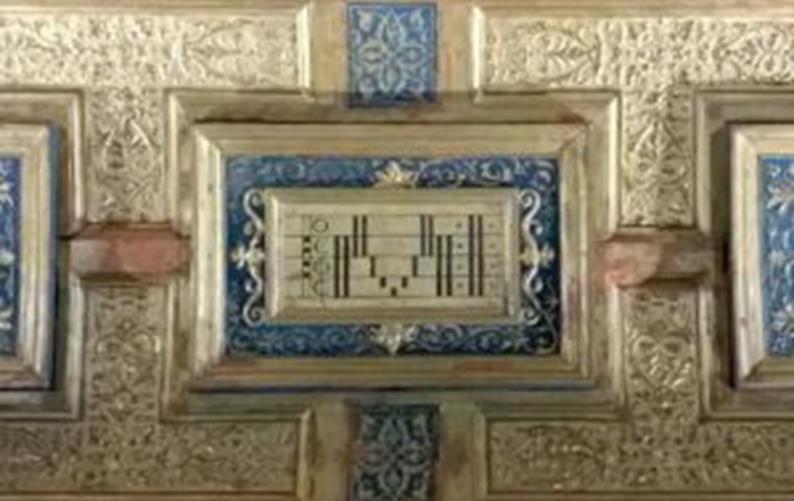
Emblem of Silence, from the Grotta of Isabella d’Este in the Ducal Palace of Mantua
Was Isabella like Cersei Lannister?
Really shall we compare the first lady of the Renaissance to the evil queen of Westeros? Well, if we do we find many similarities.
First of all, did you notice we are calling the queen “Cersei Lannister” and not “Cersei Baratheon”? She is known by her maiden name, i.e. her surname before marriage.
Many other Ladies in GOT are known with the surnames of their husbands: Catelyn Stark (née Tully), Olenna Tyrell (née Redwyne), Lysa Arryn (née Tully). But everybody knows Cersei as Cersei Lannister.
For the entire time of her life Isabella d’Este was introducing herself using her own family name, and not as a Gonzaga (the surname of her husband, the Lord of Mantua Francesco II Gonzaga).
And so, this is a first big similarity between Ceresi and Isabella.
Let’s talk about one of the habits of Cersei: she is a notorious wine-addicted. We have seen her drinking wine in so many occasions… even in the trailer of season 8 (and this is quite interesting, as we were supposing the Queen not drinking during the pregnancy: is she going to lose the baby in the upcoming final season?)
Isabella d’Este was a wine lover too, and – believe me – she used to have white wine at breakfast (going then red for lunch). In the letters of Isabella we can find many orders for wine, both white and red and mostly one of her favorites: the sweet Malvasia. Also, being an insatiable collector, as I mentioned before, she put her eyes on an incredibly precious wine-cooler, which that rare artist Caradosso had made of forty-nine pieces of crystal mounted on a richly chased stand of silver-gilt and enamel… this is really what we can call drinking in style!
And about style… both Cersei and Isabella were trend-setters. The different hairstyles shown by the Queen of Westeros were largely copied by the other ladies… starting from the young Sansa. And after the dishonorable Walk of Shame, when the hair of the Queen was dramatically cut, the most loyal lady-in-waiting of Cersei, named Bernadette, had an extreme hair cut as well, giving a sign of her allegiance to the queen.
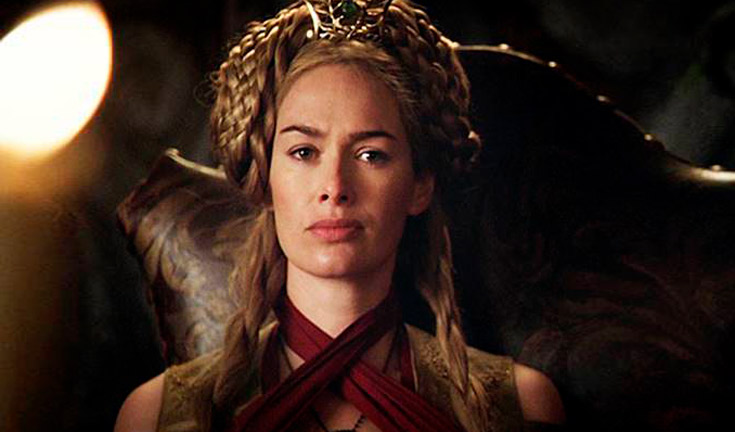
Cersei’s hairstyle in GOT season 1
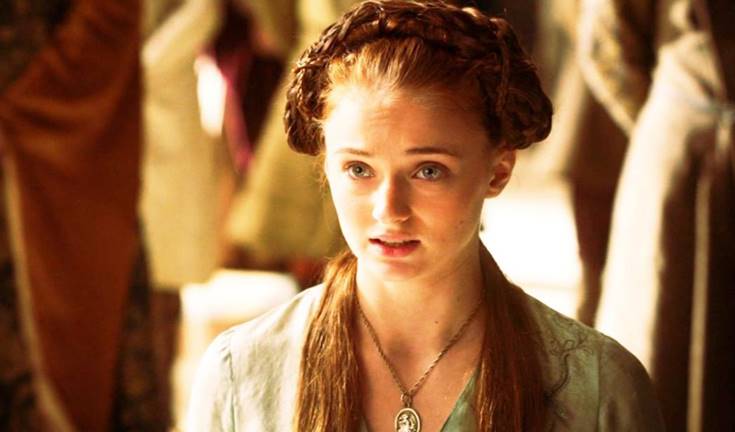
Sansa Stark showing a Cersei-esque hairstyle in GOT season 1
In 1510s Isabella d’Este launched a new fashionable hairstyle, known as “capigliara”, a voluminous combination between a hairstyle and a headdress, made by braiding the hair with postiches, bows, ribbons, beads and pearls. Although Isabella, at first, tried to reserve the privilege to wear this new hairstyle to her closest friends, it was not long before this fashion, spread all over Renaissance Italy.
So – sorry to say it – if we compare Isabella d’Este with some of the main female characters of “Game of Thrones”, it appears clear that the most similar is Cersei. Maybe not the nicest one… but, for the moment, the only one who managed to sit on the Iron Throne. Not bad, Isabella!
